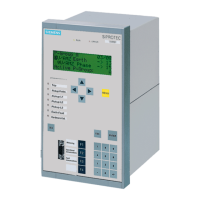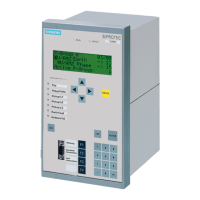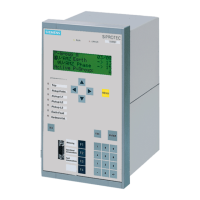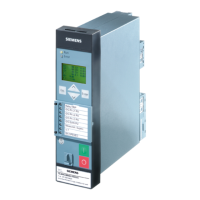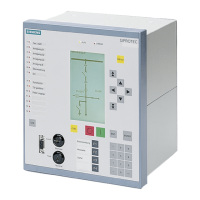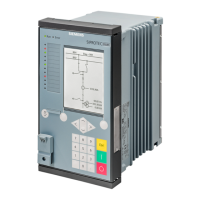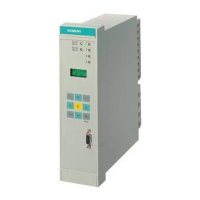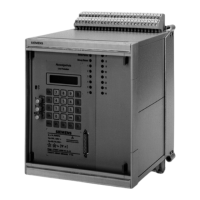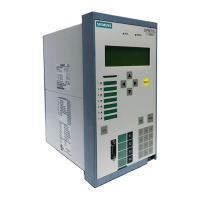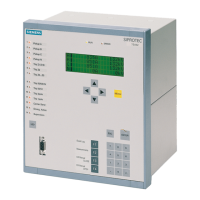2 Functions
162
7SD5 Manual
C53000-G1176-C169-1
2.5.4 Tripping Logic of the Distance Protection
2.5.4.1 Method of Operation
General Pickup Using the fault detection modes I, U/I or U/I/ϕ, the signal „Dis. PICKUP“ (general
pickup of the distance protection function) is generated after the pickup as soon as one
of the conditions for pickup is fulfilled. As soon as any of the distance zones has de-
termined with certainty that the fault is inside the tripping range, the signal „Dis.
PICKUP“ is generated when using the impedance pickup.
This signal „Dis. PICKUP“ is alarmed and made available for the initialisation of in-
ternal and external supplementary functions. (e.g. teleprotection signal transmission,
automatic reclosure).
Zone Logic of the
Independent Zones
Z1 up to Z5
As was mentioned in the description of the measuring technique, each distance zone
generates an output signal which is associated with the zone and the affected phase.
The zone logic combines these zone fault detections with possible further internal and
external signals. The delay times for the distance zones can be started either all to-
gether on general fault detection by the distance protection function, or individually at
that moment the fault enters the respective distance zone. Parameter Start Timers
(address 1510) is set by default to on Dis. Pickup . This setting ensures that all
delay times continue to run together even if the type of fault or the selected measuring
loop changes, e.g. because an intermediate infeed is switched off. This is also the pre-
ferred setting in the case of other distance protection relays in the power system
working with this start timing. Where grading of the delay times is especially important,
for instance if the fault location shifts from zone Z3 to zone Z2, the setting on Zone
Pickup should be chosen. The simplified zone logic is shown in Figure 2-55 for zone
1, Figure 2-56 for zone 2 and Figure 2-57 for zone 3. Zones Z4 and Z5 function ac-
cording to Figure 2-58.
In the case of zones Z1, Z2 and Z1B single-pole tripping is possible for single-phase
faults, if the device version includes the single-pole tripping option. Therefore the
event output in these cases is provided for each pole. Different trip delay times can be
set for single-phase and multiple-phase faults in these zones. For multiple-phase
faults and faults in the other zones, the tripping is always three pole.
1751 Op. mode Z1B Forward
Reverse
Inactive
Forward Operating mode Z1B (ex-
tended zone)
1752 ZR(Z1B) 1A 0.050 .. 200.000 Ω 3.000 Ω ZR(Z1B), Impedance
Reach
5A 0.010 .. 40.000 Ω 0.600 Ω
1771A Mem.Polariz.PhE 0.0 .. 100.0 % 15.0 % Voltage Memory polariza-
tion (phase-e)
1772A CrossPolarizPhE 0.0 .. 100.0 % 15.0 % Cross polarization (phase-
e)
1773A Mem.Polariz.P-P 0.0 .. 100.0 % 15.0 % Voltage Memory polariza-
tion (ph-ph)
1774A CrossPolarizP-P 0.0 .. 100.0 % 15.0 % Cross polarization (phase-
phase)
Addr. Parameter C Setting Options Default Setting Comments
www . ElectricalPartManuals . com
